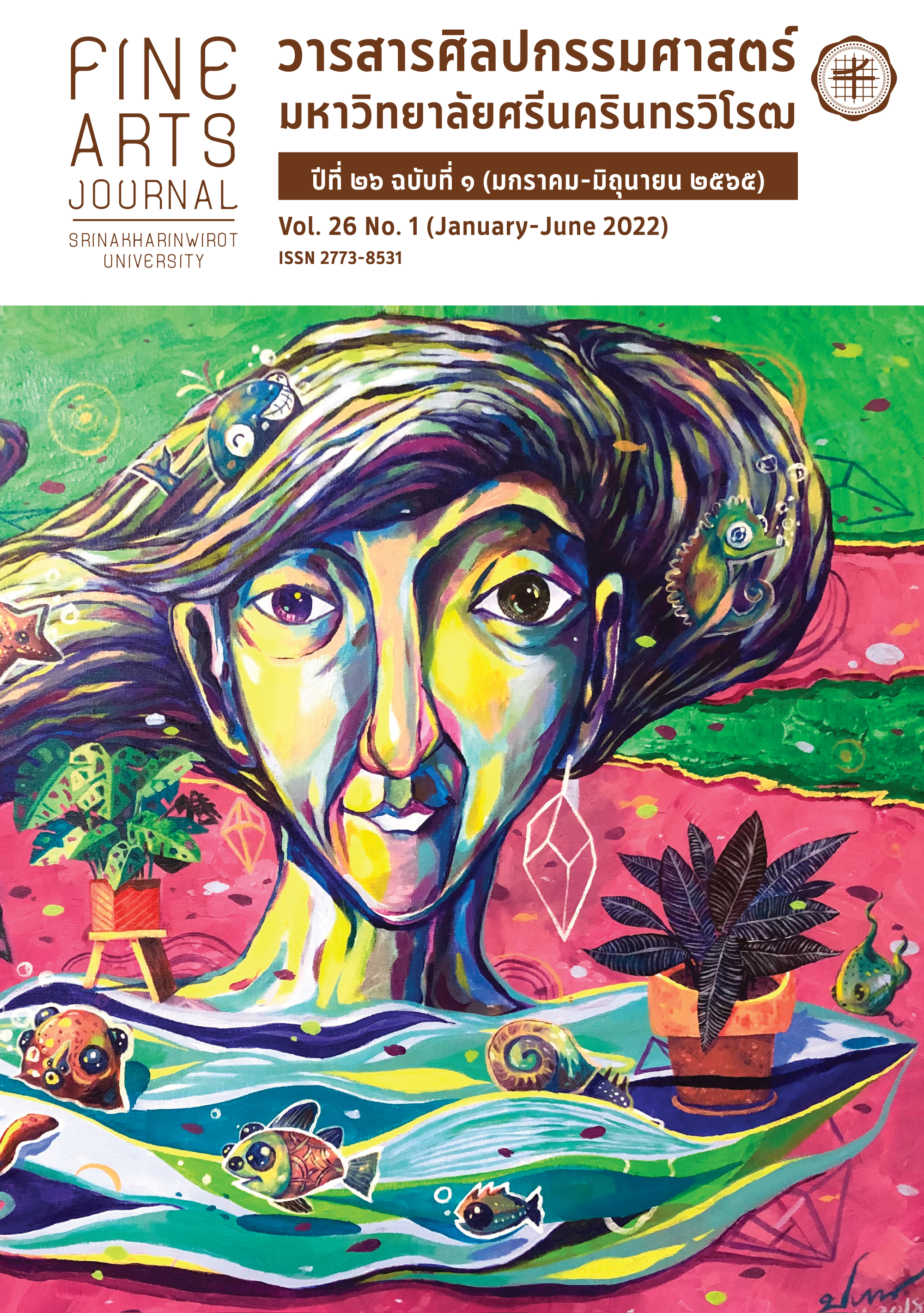A TEACHING APPROACH WITH CREATIVITY-BASED LEARNING TO DEVELOP CREATIVITY IN PRIMARY SCHOOL STUDENTS
Keywords:
Creativity-based learning, Primary school students’ creativity, Teaching planAbstract
The purpose of this research is to study the effectiveness of the teaching approach using creativity-based learning for developing primary school students’ creativity. The participants were Prathom Suksa I students from two classrooms at Ongkharak Demonstration School, Srinakharinwirot University, Nakhon Nayok Province, which were selected based on a simple random sampling. The 60 participants were divided into two classroom groups: the experimental group (n=30) and the control group (n=30). The research instruments were the teaching plan using creativity-based learning approach and Test for Creative Thinking Drawing Production (TCT-DP) (Jellen and Urban). The Two Group Pretest-Posttest Design was applied as the research methodology. The comparison between pretest scores and posttest scores of the experimental group and control group were conducted to arrive at the progress scores of each group. The collected data were then statistically analyzed using t-test for dependent samples to make comparisons between the scores of the experimental group and the control group. The results of this research indicated that the teaching plan using creativity-based learning for developing primary school students’ creativity was effective according to the evaluation made by a group of experts indicating the Index of Item-Objective Congruence (IOC) results which met the criteria of 0.5 on all topics. The comparison between the pretest scores and the posttest scores of the experimental group also demonstrated a significant difference. The mean of pretest score of the experimental group was 13.63. After being taught with creativity-based learning teaching plans, students’ creativity improved as shown by a mean of posttest score of 18.13. The mean of posttest score of the control group taught with a conventional learning plan was 14.90. When making comparison between the posttest scores of two groups, the t-test showed the statistical value of 2.33. Therefore, creativity-based learning teaching plan had higher efficiency to enhance students’ creativity than a conventional teaching plan with a statistical significance level of .05. This indicated that students’ creativity could be explicitly improved by creativity-based learning used in teaching.
Downloads
References
ฉันทิดา สนิทนราทร. (2560). สรุปจิตวิทยาการดูแลเด็กวัย 0-12 ปี. สืบค้นเมื่อ 20 กุมภาพันธ์ 2563 จาก
http://www.trueplookpanya.com/knowledge/content/56125/-blo-parinf-par-parpres-parsch-
นิพาดา เทวกุล. (2547). ความคิดสร้างสรรค์ (Creative thinking). สืบค้นเมื่อ 20 กรกฎาคม 2563 จาก
https://pirun. ku.ac.th/~agrpct/lesson1/creative_thinking.html
มงคล เรียงณรงค์, และลัดดา ศิลาน้อย. (2558). การพัฒนาทักษะการเรียนรู้ในศตวรรษที่ 21 และผลสัมฤทธิ์ทางการเรียนโดยใช้รูปแบบการสอนแบบสร้างสรรค์เป็นฐาน (CBL) ของนักเรียนชั้นมัธยมศึกษาปีที่ 1 รายวิชา ส 21103 สังคมศึกษา 2. Journal of Education Khon Kaen University, 38(4), 141-148.
วิริยะ ฤาชัยพาณิชย์. (2558). การสอนแบบสร้างสรรค์เป็นฐาน. วารสารนวัตกรรมการเรียนรู้ มหาวิทยาลัย
วลัยลักษณ์, 1(2), 23-38.
สิริพัชร์ เจษฎาวิโรจน์. (2560). กระบวนการเรียนรู้แบบสร้างสรรค์เป็นฐาน ในกระบวนวิชา CEE2205 (ความคิดสร้างสรรค์สำหรับเด็ก). วารสารศึกษาศาสตร์ปริทัศน์ มหาวิทยาลัยเกษตรศาสตร์, 32(2), 1-8.
สุวรรณา ก้อนทอง. (2547). ผลการจัดศิลปะประกอบเสียงดนตรีคลาสสิคที่มีต่อความคิดสร้างสรรค์ของเด็กประถมวัย (วิทยานิพนธ์ปริญญามหาบัณฑิต). มหาวิทยาลัยศรีนครินทรวิโรฒ, กรุงเทพมหานคร.
สำนักงานส่งเสริมสังคมแห่งการเรียนรู้และคุณภาพเยาวชน. (2559). ธนาคารโลกเผยคุณภาพแรงงานไทยถดถอยฉุดรั้งโอกาสก้าวออกจากกับดักรายได้ปานกลาง. สืบค้นเมื่อ 13 กรกฎาคม 2563 จากhttp://www.qlf.or.th/Home/ Contents/1114
ศิรกาญจน์ จงสิริวัฒน์. (2560). การพัฒนาทักษะการเรียนรู้ในศตวรรษที่ 21 และผลสัมฤทธิ์ทางการเรียนโดยใช้รูปแบบการสอนแบบสร้างสรรค์เป็นฐาน (CBL) กลุ่มสาระการเรียนรู้วิทยาศาสตร์ชั้นมัธยมศึกษาปีที่ 1. สืบค้นเมื่อ 25 ธันวาคม 2563 จาก http://www.kroobannok.com/board_view.php?
b_id=148255&bcat_id=16
Ersoy, E., & Baser, N. (2014). The effects of problem-based learning method in higher
education on creative thinking. Procedia - Social and Behavioral Sciences. Retrieved
December, 2020, from https://pdf.sciencedirectassets.com/277811/1-s2.0-
S1877042814X00108/1-s2.0-S1877042814008076/main.pdf?X
Guilford, J.P. (1967). The nature of human intelligence. New York: McGraw-Hill.
Jellen, H.G., & Urban, K.K. (1989). Assessing creative potential world-wide: The first cross-cultural application of the Test for Creative Thinking—Drawing Production (TCT-DP). Gifted Education International, 6(2), 78–86. https://doi.org/10.1177/026142948900600204
Downloads
Published
How to Cite
Issue
Section
License

This work is licensed under a Creative Commons Attribution-NonCommercial-NoDerivatives 4.0 International License.






